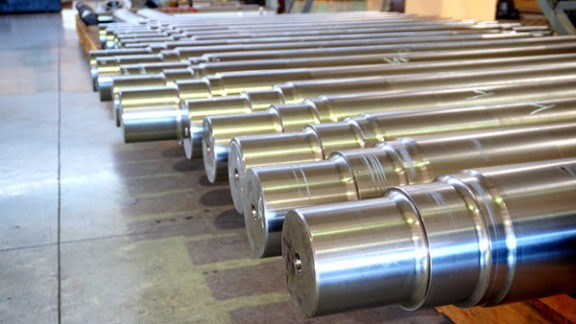In her summer 2023 column for Groundwater Monitoring & Remediation, “Headlines from the Environmental Restoration Program Area,” Sarah Mass highlights and summarizes recent findings in monitoring and remediation technologies being developed by researchers funded through the Department of Defense’s Strategic Environmental Research and Development Program (SERDP) and the Environmental Security Technology Certification Program (ESTCP).
Many of these projects focus on improving understanding of the occurrence, fate, transport, and remediation of per- and polyfluoroalkyl substances (PFAS), as well as addressing groundwater affected by PFAS, 1,4-dioxane, and chlorinated volatile organic compounds.
Sarah — an environmental engineer at Haley & Aldrich based in Denver, notes the recent rising use of absorbent media such as powdered activated carbon (PAC) and colloidal activated carbon (CAC) for in situ sequestration of chemicals in groundwater. She reviews the research of Principal Investigator Dr. Albert Juhasz (University of South Australia) and colleagues, who sought to better understand PAC and microbiota interactions.
CAC’s adsorption abilities can be decreased by bacterial growth that reduces the sorption sites available for chemicals, so these researchers wanted to see if microbes pose similar risks to the efficacy of PAC. Sarah details their methods in multiple studies and notes their finding that the bacterial content of the PAC was not a limiting factor for mineralization; however, a longer incubation time may be necessary to fully investigate this phenomenon.
Sarah also looks at the work of Principal Investigator Dr. Anthony Danko of the Naval Facilities Engineering and Expeditionary Warfare Center, who, along with colleagues, conducted studies to create a quantitative and regulatory-useful framework for evaluation of the use of monitored natural attenuation (MNA) techniques to manage sites contaminated by chlorinated ethanes, associated breakdown products, and 1,4-dioxane. These contaminants have been widely documented at chlorinated solvent sites, including in groundwater, but the current guidelines and regulations for MNA do not yet include them, despite MNA’s increasing and cost-effective use in remediation. As Sarah reports, the researchers developed and updated existing software tools to assist with identification and fate and transport investigations for MNA and made these tools publicly available.
Finally, Sarah delves into the promising “Mines super sauce” developed by Dr. Christopher Bellona of the Colorado School of Mines and his team, which, as he explained in a recent webinar, should accelerate the safe and effective removal of PFAS from the aqueous film-forming foams in widespread use in many firefighting and fire-suppression efforts. By conducting various desorption experiments using transects of materials in firefighting systems, Dr. Bellona’s team used various techniques and substances until they created a formula for a reagent cleaner that proved to be twice as effective as methanol and three times as effective as water at removing PFAS from pipes.
Sarah provides quarterly updates for groundwater professionals through her column. To access the full text of her columns and review payment options, visit Groundwater Monitoring & Remediation.
- Education, healthcare, and cultural institutions
- Government infrastructure
- Industrial and manufacturing
- Manufacturing
- Real estate developers
- Construction
- Remediation construction
- Contaminated site management
- Emerging contaminants
- PFAS
- Remediation
- EHS compliance
- Water quality
- Water resources
- Groundwater
- Surface water




